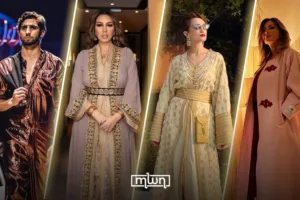Marrakech – Starting this November, Qatar’s Museum of Islamic Art is rolling out a dazzling new exhibit, “Splendors of the Atlas: A Journey Through Moroccan Heritage.”
Get ready to be swept away by over 200 stunning pieces that spotlight Morocco’s rich cultural tapestry.
Set to run until March 8, 2025, this showcase is more than just a display; it’s a passport to explore the vibrant forces that have shaped Morocco’s unique identity.
As part of the Qatar-Morocco Culture Year 2024, the exhibit will feature a captivating array of artifacts, manuscripts, instruments, jewelry, and photographs.
Each piece narrates the story, society, and artistic expressions of the North African kingdom, while showcasing its vibrant role in energizing contemporary culture.
The “Splendors of the Atlas” exhibit showcases an exclusive collection of never-before-seen artifacts loaned from Moroccan institutions like the National Foundation of Museums and the National Library of Rabat.
Alongside these, a selection of previously unreleased works from the Qatar Museums, the Museum of Islamic Art, and the forthcoming Lusail Museum will be on display.
Monia Chokhab Aboudi, Deputy Director of Museum Affairs at the Museum of Islamic Art, will curate the show.
In celebrating the Qatar-Morocco Culture Year 2024, Sheikha Al Mayassa bint Hamad bin Khalifa Al Thani, Chair of the Qatar Museums Board, expressed her excitement: “We are thrilled to partner with Moroccan institutions for this cultural milestone.”
She emphasized that this collaboration will offer Qataris and residents a deeper insight into the rich Islamic traditions of their North African neighbors, noting: “Our shared commitment to expanding knowledge, scientific discovery, and artistic excellence has cultivated a rich program for this cultural year.”
A multifaceted cultural heritage
The Culture Years initiative fosters enduring cultural partnerships between Qatar and its partner countries, aiming to enhance respect and understanding among diverse cultures while encouraging unity among peoples.
“There is no better place than the Museum of Islamic Art to host this splendid exhibit, as it is dedicated to preserving, showcasing, and promoting Islamic cultures from around the world,” said Sheikha Nasser Al Nasr, Director of the Museum of Islamic Art.
“In curating this exhibit, our goal was to spotlight the multifaceted Moroccan cultural identity, giving visitors a chance to explore the country’s rich heritage. This exhibition bridges the past and present, inviting the public to immerse themselves in the timeless beauty of Moroccan culture and its lasting global legacy.”
The “Splendors of the Atlas” is divided into five sections, each focusing on a specific theme that highlights Morocco’s diverse and interconnected cultures and their enduring impact on contemporary life.
One of the sections, “Faces of Morocco: Nature and Society,” serves as an engaging introduction, featuring a captivating collection of photographs by Bruno Barbey, Irving Penn, Lalla Essaydi, Mous Lamrabat, and Mounir Raji.
These images capture Morocco’s environmental diversity and contemporary populations, providing a window into the daily lives of Arab and Berber communities and the landscapes they inhabit.
“Spirit of Morocco: Kings, Saints, and Thinkers” delves into the history of Morocco’s ruling dynasty, which planted the seeds of knowledge in religious sciences and contributed to scientific advancements in Fez and Marrakech – two major centers of learning.
This section illuminates how Moroccan leaders, direct descendants of Prophet Mohammed, paved the way for scientific research in astronomy, mathematics, medicine, and more.
It highlights institutions of higher learning, including the University of Al Quaraouiyine, founded by the Muslim Fatima Al-Fihriya in 859, the world’s oldest continuously operating university.
Morocco as a crossroads of civilizations
“Fabric of Traditions: Moroccan Craftsmanship” is the largest section of the exhibit, exploring the pivotal role of craftsmanship in Moroccan culture.
It showcases the thriving industries passed down through generations, such as leatherwork, textiles, carpets, ceramics, jewelry, and woodworking.
Moroccan ceramics reflect the country’s Islamic heritage, with Berber and Andalusian influences, while handmade textiles portray Morocco as a crossroads of civilizations, blending African, European, and Middle Eastern influences.
This section also features traditional garments and jewelry, including caftans worn by women for celebrations and events, illustrating how designers and artisans have preserved traditional costumes while adapting them for modern needs.
Inspired by Moroccan craft workshops and markets, this section promises a captivating experience for visitors.
The exhibition also features a section titled “Traditional Sounds of Morocco,” showcasing musical instruments from the Dar Jamai Museum in Meknes.
Used in a range of creations from Andalusian symphonies to Southern Moroccan Gnawa music, these instruments will be complemented by videos that offer a glimpse into the unique musical heritage of various regions.
“Tribute to Contemporary Moroccan Craftsmanship” highlights Morocco’s artisanal mastery with a modern twist. This section presents seven pieces commissioned from Moroccan designer Noureddine Amir, blending traditional craftsmanship with innovative elements to create striking abstract artworks.
The pieces will be suspended from the exhibition ceiling, accompanied by lighting installations to enhance the appreciation of traditional textiles and their production techniques.
Additionally, a book will accompany the exhibition, featuring short essays on the main themes, along with photos and detailed information about each displayed work.
Many items from the Qatar Museums’ collections will be showcased for the first time.
As the “Splendors of the Atlas” exhibition unfolds, it promises to be a breathtaking journey through Morocco’s rich cultural heritage.
















